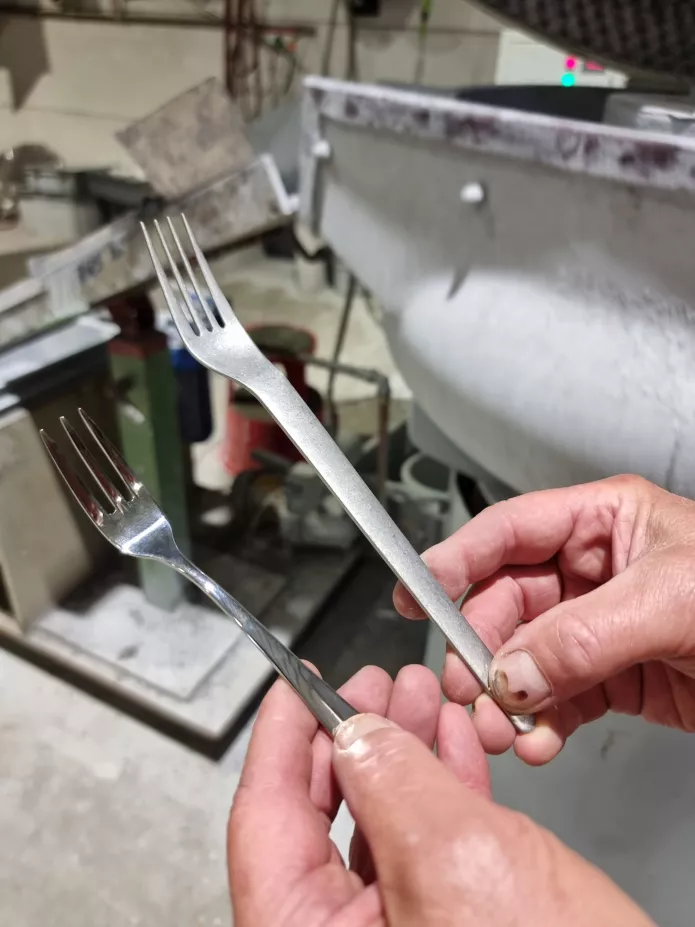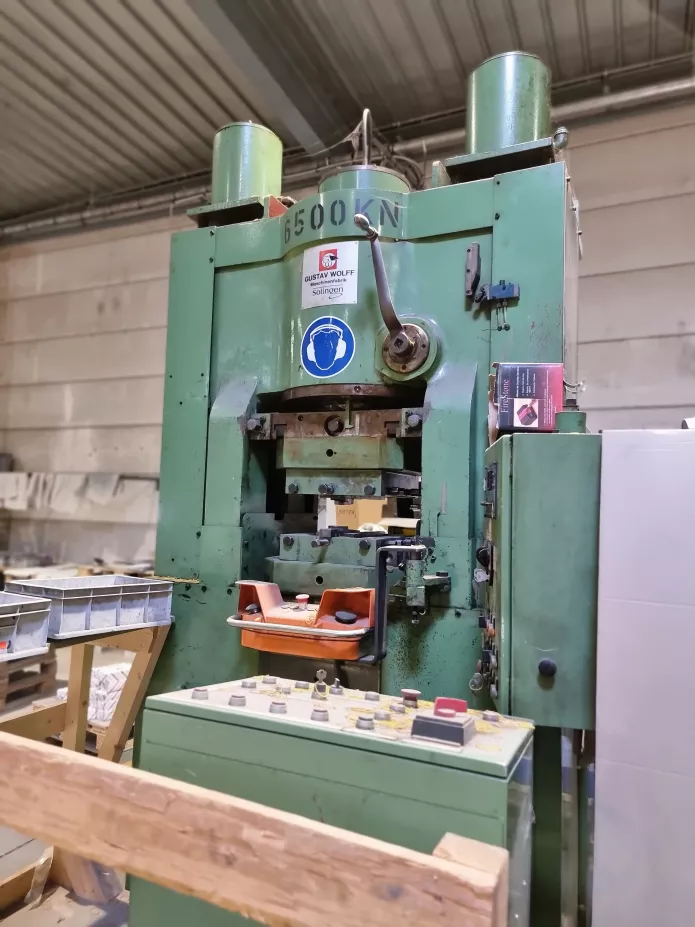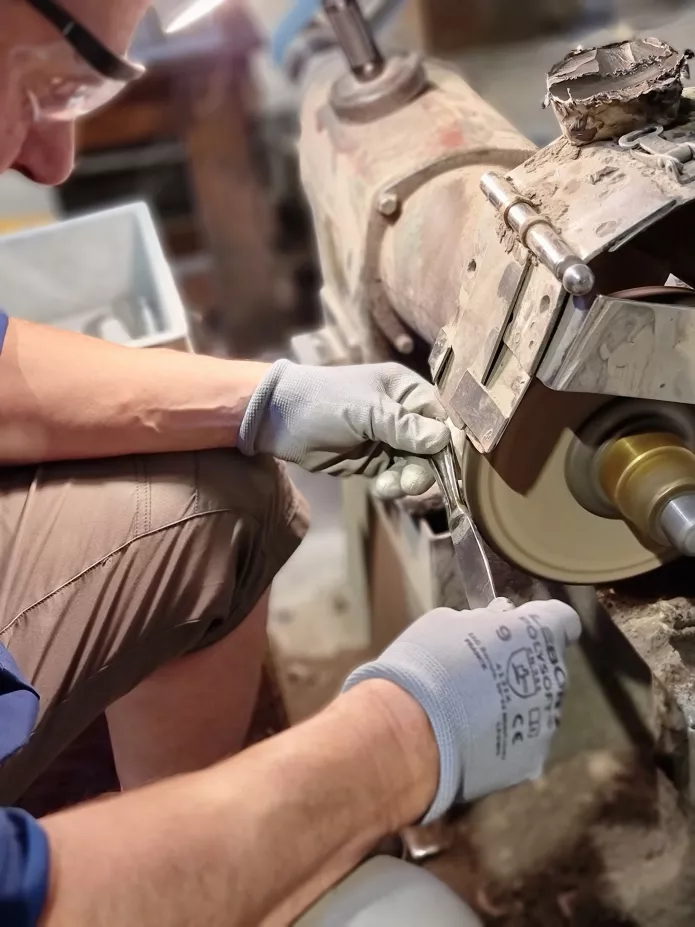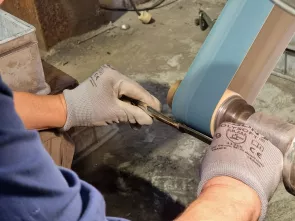
1. It all starts with a sheet or coil of stainless steel
The story of cutlery starts with a sheet or coil (reel) of stainless steel. This steel has the correct thickness for the cutlery and its composition meets the desired quality.

2. Cutting the steel
The steel sheet is first cut using a press, applying pressure ranging from 100 to 150 t to produce a blank.
This creates a rough outline and can be used to create several pieces, such as a fork or table knife for different models. For a spoon, the blank will be passed through a rolling mill to create the desired width. The widened blank is then cut out to form the final outline for the model, using a 60-80 t press.
The same steps are followed for forks with the exception of the rolling mill, which may be simplified or removed from the process. The tines are then cut out using a low power press. The next step is to stamp each piece.

3. Stamping
The next stage is use of a press with pressure varying from 200 to 800 t, in order to obtain the final shape and decoration of the product.
Each of these steps requires a highly specialist set of tools. In fact, the various elements of a matrix must not only be perfectly calibrated, but also correspond exactly to the desired result.


4. Time for polishing
Once stamped, the cutlery needs to be polished. The first step is to use three abrasive bands with an increasingly fine grain, to polish the sides until they are perfectly smooth. The final polishing of the sides is done by hand, relying on the experience and expertise of manual polishers. It is the manual polishers that will apply the matte or high shine finish, depending on the model.
The second stage is to polish the front and back of the cutlery. This process is fully automated using seven polishing machines, each performing a precise task.
When it comes out of the last machine, the cutlery is then placed piece by piece on a degreasing machine for cleaning. It is then checked, automatically packaged in a plastic bag and boxed, ready for dispatch.